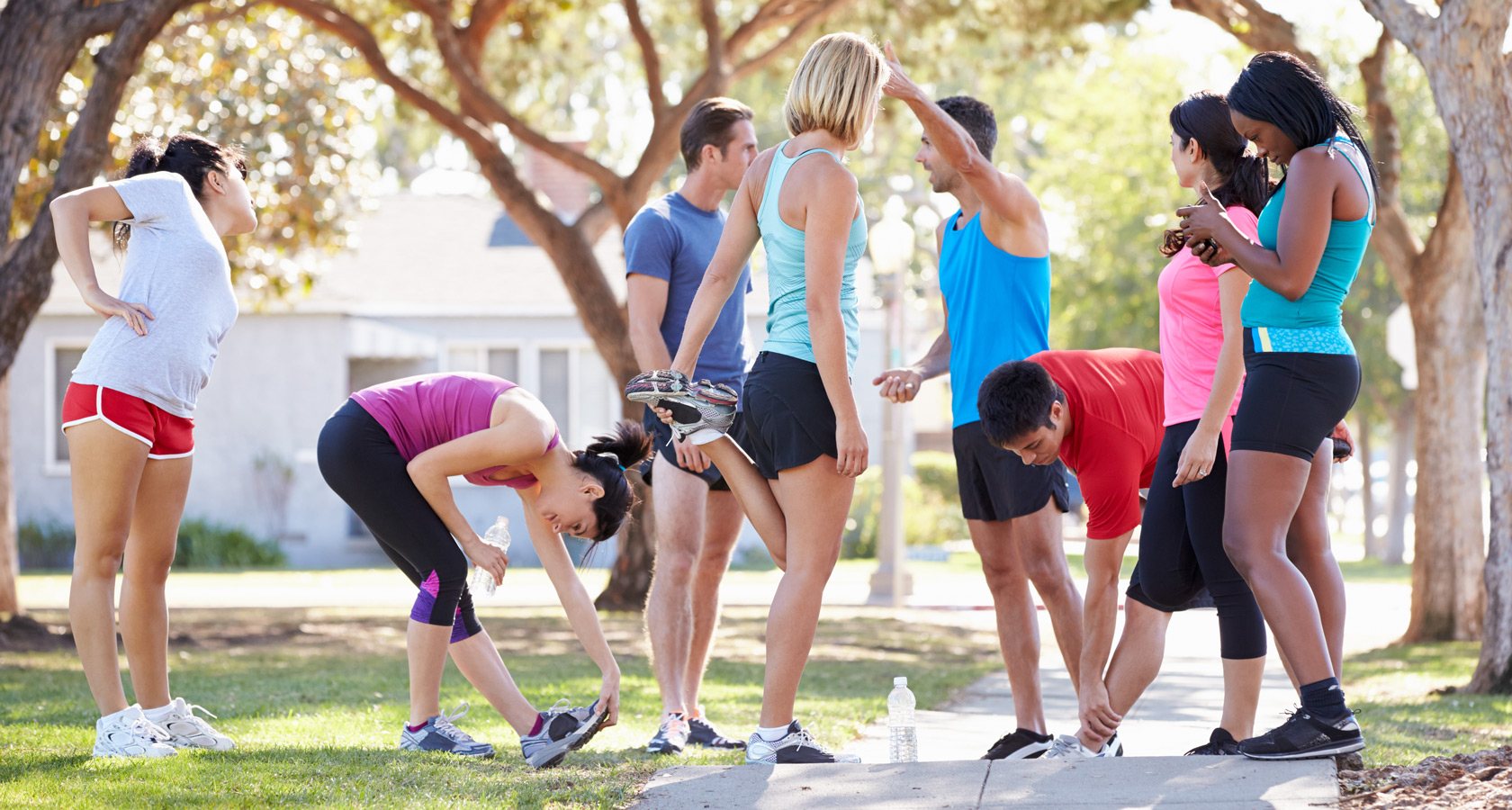How To Learn To Run
Compared to swimming and biking, running seems simple enough. No fancy gear or technique — just put one foot in front of the other and repeat until you reach the finish line. But a successful running plan requires good strategy. Use these steps to get started and get ready for race day.
Step 1: Gear Up
For your first runs, all you’ll need is a pair of gym shoes and a water bottle. Though any gym shoes will suffice, consider buying a new pair from a specialty running store. There, a fit expert will watch you run and pick the best shoes for your movement patterns. Dedicate them only to running and replace them every 300 to 500 miles. Learn more about run gear here.
Step 2: Find Routes and Running Groups
Next, figure out where to run and who to run with. Ask employees at your running shop or gym to recommend safe outdoor routes and local running groups. Not only will pre-scheduled group runs hold you accountable, they’ll introduce you to more experienced runners.
For solo runs, use fitness tracking apps like Map My Run, Garmin Connect and Strava to identify the most popular routes in your neighborhood. Also pay special attention to your safety by being aware of your surroundings, ditching the headphones, carrying a phone or telling someone where you’re going. If you’re running at night, wear a reflective vest to make yourself seen by cars.
Step 3: Start Running
Begin with a five-minute dynamic warm-up — moving stretches including lunges and leg swings — to activate the core, glute and leg muscles. Then, start moving slowly enough that you could speak comfortably. You may feel like you’re not working hard enough unless you’re panting, but take it easy: research shows that runners improve most when they run 80 percent of their miles at low intensity.
But runners notoriously underestimate their effort level, so use the “talk test” to judge your exertion. Try to talk to your partner — if your breath is labored, slow down and take regular walk breaks if necessary. As you improve your fitness, you can focus on shortening your walking time.
“A run/walk method is proven to work,” says USA Triathlon Certified Coach Amy Avery. “First, we do a three-minute to two-minute breakdown, then we do a 4/1 breakdown, then you can switch those up into 10-minute increments.”
Step 4: Increase Your Mileage and Intensity — Slowly
Soon enough, your biggest challenge will be wanting to run too much. But unfortunately, your muscles and tendons may not adapt to running as quickly as your lungs. Up your mileage too quickly and you’ll risk overuse injuries like IT band syndrome, runner’s knee and shin splints.
“[My clients] think they need to run all the time. They really need to develop the structure —build their muscles, joints and ligaments — so they can run longer,” says Sharone Aharon, USA Triathlon Certified Coach and founder of Well-Fit Triathlon and Training Inc.
So what’s too quickly? Most runners follow the 10 percent rule — increasing mileage by no more than 10 percent each week. Coaches also recommend “cutting back” every third or fourth week, slightly decreasing your distance before picking it back up. For example, someone running 20 miles per week would follow this plan:
- Week 1: 20 miles
- Week 2: 22 miles
- Week 3: 24.5 miles
- Week 4: 22 miles
- Week 5: 27 miles
To get faster, dedicate 20 percent of your weekly mileage to harder efforts like tempo runs (a “comfortably hard” effort) or speed work (200, 400 or 800-meter intervals split by recovery periods). Some muscle soreness will be inevitable, but if your pain alters your running form, slow down — or skip a run.
“Put your Type A personality aside,” says M.J. Gasik, USA Triathlon Certified Coach and owner of Tri Right Coaching “It’s better to take a few days off, because once you come back, you’ll come back stronger.”
Step 5: Get Race Ready
Fresh as you might feel on your morning 5k, remember that on race day, you’ll start your run after an intense bike ride. This leaves a heavy feeling in your quads and causes many unprepared triathletes to shuffle through the finish.
Starting two months before your race, prepare by doing brick workouts — a bike session followed by a run — at least once per week.
First-timers should ease into bricks, Aharon says, doing a short, easy ride followed by a 10- to 15-minute run. Because you’ll have time to “transition” between sports during the race, take a few minutes to sit down, stretch and drink water before running. And as you begin, it’s OK to walk — even during a race.
“Your heart rate is high when you get off the bike and you start running so you really have to keep that in control,” Avery says. “Don’t go out at an [intense] pace because you won’t be able to sustain that.”
Whether on race day or a regular run, listen to your body for a healthier and happier experience.


